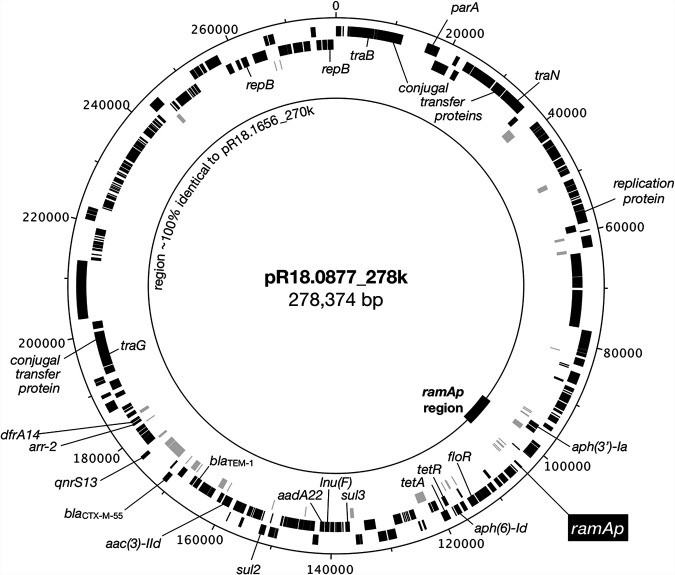Antimicrobial resistance (AMR) is a growing global health concern. Bacteria employ various mechanisms to evade the effects of antibiotics, and one crucial mechanism is the overexpression of efflux pumps. These pumps actively expel antibiotics from the bacterial cell, reducing the intracellular drug concentration and rendering the treatment ineffective. RamA, a transcriptional regulator, plays a significant role in this resistance mechanism by activating the expression of efflux pump genes. This article delves into the intricacies of RamA, its impact on antimicrobial resistance, and its potential as a target for novel therapeutic strategies.
RamA: A Key Regulator of Efflux Pumps
RamA belongs to the AraC/XylS family of transcriptional regulators and is primarily found in Enterobacteriaceae, including Salmonella, Klebsiella, and Escherichia coli. It directly binds to the promoter regions of efflux pump genes, such as acrAB and tolC, thereby enhancing their transcription and ultimately leading to increased efflux pump activity. The AcrAB-TolC efflux pump system is particularly important as it can expel a wide range of antibiotics, including quinolones, chloramphenicol, and tetracycline. Consequently, RamA overexpression significantly contributes to multidrug resistance (MDR) in these bacterial species. Normally, RamA expression is tightly controlled by a repressor protein called RamR. However, disruptions in this regulatory mechanism, such as mutations in ramR or the acquisition of plasmid-borne ramA genes (referred to as ramAp), can lead to RamA overexpression and subsequent antibiotic resistance.
Plasmid-Borne ramA and its Implications
Recent research has identified the presence of ramAp on IncHI2 plasmids in Salmonella enterica serovar Goldcoast. This finding is particularly concerning because plasmids are mobile genetic elements that can be readily transferred between different bacterial strains and even species. This horizontal gene transfer facilitates the rapid dissemination of resistance determinants, contributing to the widespread emergence of MDR bacteria. Studies have demonstrated that the introduction of ramAp into susceptible E. coli strains resulted in a significant increase in resistance to various antibiotics, including chloramphenicol, azithromycin, and quinolones. This resistance phenotype was effectively reversed by the addition of PaβN, an efflux pump inhibitor, confirming the role of RamA-mediated efflux pump activation in the observed resistance. The ramAp gene found on the plasmid was nearly identical to the chromosomal ramA gene from Klebsiella quasipneumoniae, suggesting potential interspecies transfer of this resistance determinant.
RamA and Fluoroquinolone Resistance
Fluoroquinolones are critically important antibiotics used to treat a wide range of bacterial infections. Resistance to these drugs is a major public health threat, and RamA has been implicated in this resistance development. While mutations in the quinolone resistance-determining region (QRDR) of topoisomerase genes are the primary mechanism of fluoroquinolone resistance, RamA overexpression can further contribute to resistance by enhancing efflux of these drugs. Furthermore, studies have shown that RamA overexpression can increase the mutation frequency in bacteria, potentially accelerating the development of QRDR mutations under fluoroquinolone selective pressure.
Conclusion
RamA is a crucial regulator of efflux pumps in Gram-negative bacteria, and its overexpression contributes significantly to antimicrobial resistance, particularly multidrug resistance. The discovery of plasmid-borne ramA genes raises serious concerns about the rapid spread of resistance. Understanding the intricate mechanisms of RamA regulation and its impact on efflux pump activity is essential for developing novel strategies to combat antimicrobial resistance. Targeting RamA or its associated efflux pumps could potentially restore the efficacy of existing antibiotics and mitigate the growing threat of MDR bacterial infections. Further research is warranted to explore the prevalence of ramAp-carrying plasmids, their contribution to the emergence of resistance, and their potential as targets for new therapeutic interventions.



